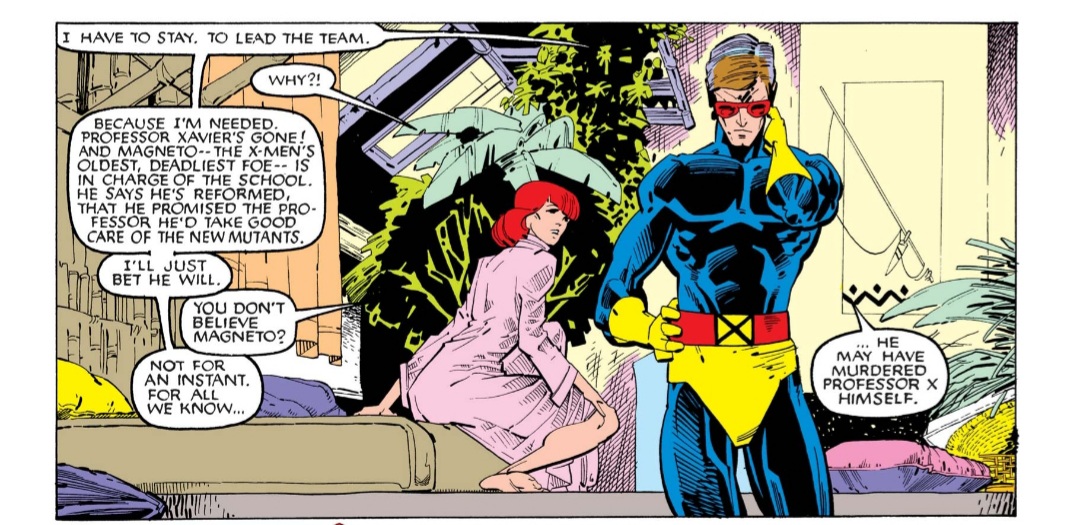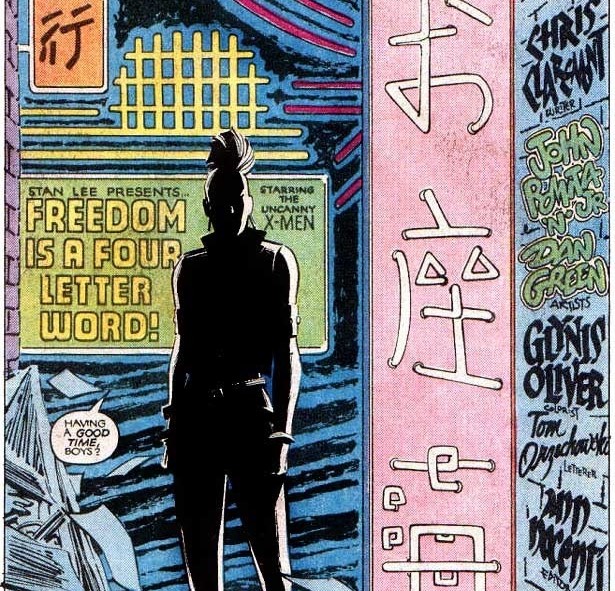In UXM 201, Cyclops famously duels Storm. Immediately prior to this, however, he verbally duels his own wife, Madelyne Pryor over his desire to stay with the X-Men in an exchange that features some of Claremont’s most direct analysis of Cyclops’ character hang-ups. #xmen 1/10 

Before this, Madelyne expresses her building frustration to Ororo. Storm tells her “He is a very private man. Such feelings are hard for him to face, much less reveal. But they are there, Madelyne. He does love you very much.” Madelyne isn’t convinced. 2/10 

The debate scene in question begins with Cyclops’ declaration to Madelyne that “I have to stay. To lead them.” His concerns are his distrust for Magneto and his (terrible) observation that Storm would be a combat liability without her powers. 3/10 

Madelyne, who has her own career as a pilot, calls him on the implicit misogyny of his presumption. “What about me? I have a life of my own – a career – do you expect me to chuck it?!” Cyclops’ then makes it clear that he absolutely did expect that. 4/10 

Madelyne then points out that a child is a shared responsibility between partners and (somewhat delightfully) even takes the conversation into the territory of financial earning potential: “I have skills, I can earn a living – can you say the same?!” 5/10 

In her (justified) frustration, Madelyne then effectively psychoanalyzes Scott: “Are you saying you - and you alone – are absolutely essential to the X-Men’s survival?! Or are you afraid they really can get along without you?” 6/10 

She continues, “Is your life so hollow – your sense of self-worth so fragile – that you believe you’re nothing without them? What about me, what about us? My commitment supersedes everything – are you telling me the same doesn’t hold true in reverse?!!” 7/10 

Cyclops has no response, and the pair hover in a beautifully-rendered silence by Leonardi, Portacio, and Oliver with an unnecessary panel gutter between them to signify the distance that has now formed within their marriage. They are divided, literally and symbolically. 8/10 

Storm (perhaps mercifully) breaks the silence and requests her duel, whilst also offering Cyclops the chance to step aside. He walks away from both Storm and Madelyne, declaring simply “no.” Madelyne then holds their baby alone, again in silence, as Storm departs. 9/10 

It’s a great little scene that adds emotional heft to the duel that follows (and the choices that inform it), whilst advancing the inherent conflict between Cyclops’ sense of duty and self as well as the fundamental inequity emerging in his relationship to Madelyne. 10/10 

• • •
Missing some Tweet in this thread? You can try to
force a refresh






















